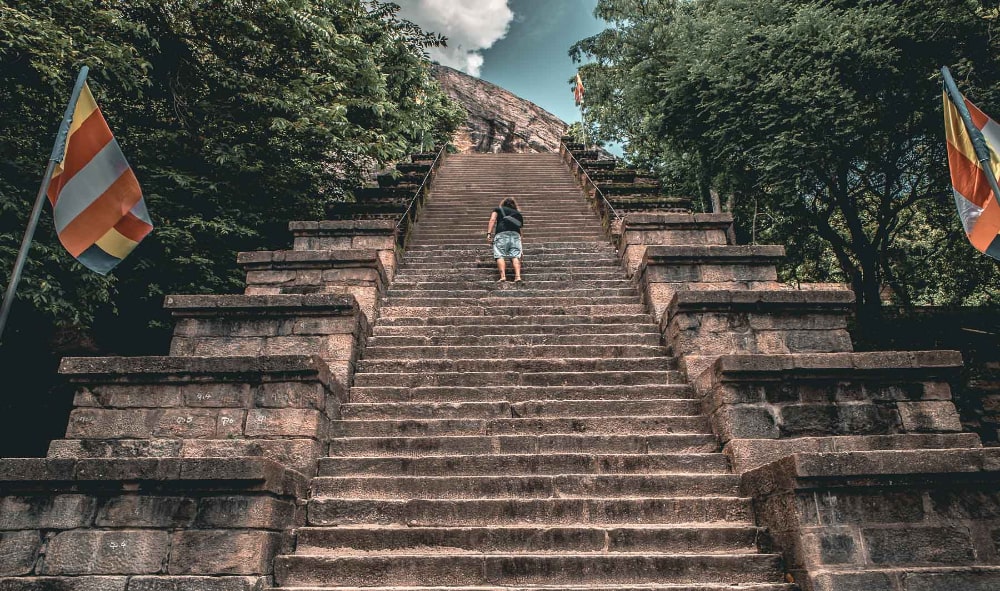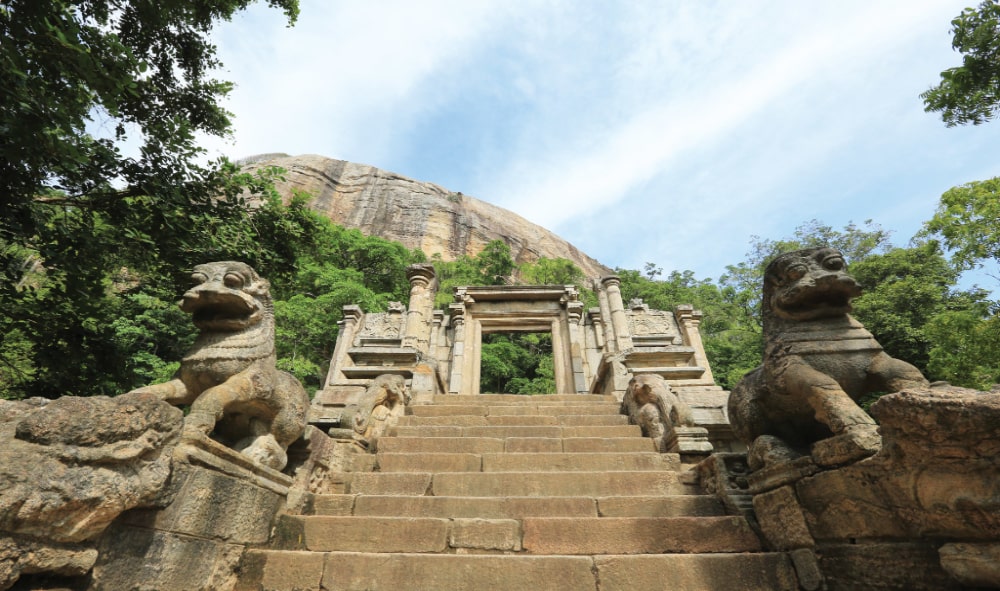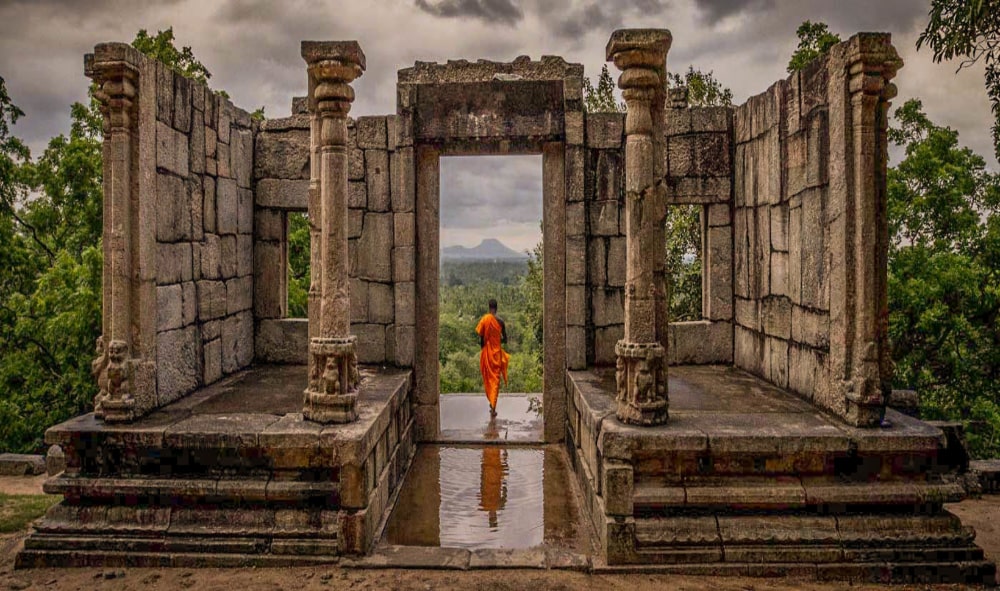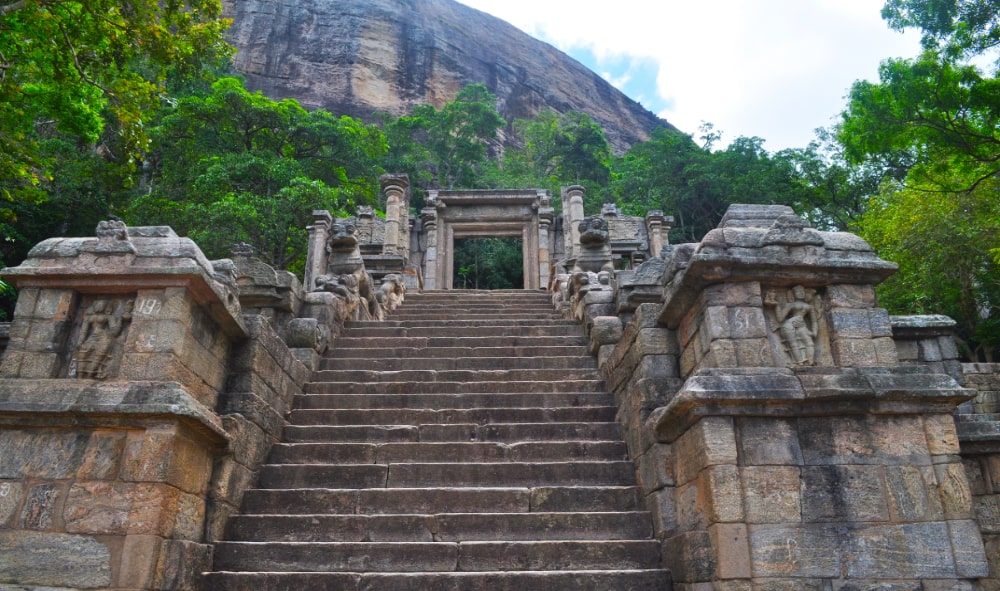Yapahuwa
Sum up
After the fall of the great city of Polonnaruwa, the Kandyan kings fled to a succession of inaccessible crags, bearing with them the sacred tooth relic of the Buddha. One of them was Yapahuwa, a huge, yet little-visited rock fortress a little way off the Kurunegala-Anuradhapura road which is one of the great architectural sites of the island. This early-13th century stronghold, developed by King Bhuvanekabahu I, is reminiscent of Sigiriya: a massive granite outcrop, set in a shady location, rises 100m above the lightly-populated plains below and is home to ruins of a palace and temple. The temple housed the famous tooth relic for 11 years from 1272 when King Bhuvenakabahu transferred the capital to Yapahuwa to outwit invading Dravidian forces from South India. Eventually captured, it was largely abandoned and became a refuge of monks and religious ascetics.
Duration: 2 hour
Best Time: Year-round
Additional Information
After Yapahuwa was abandoned, Buddhist monks took it over and they still remain there today. Highlights of the site include the dauntingly steep steps, elaborately adorned by statues of lions in an unusual design, modern temple complex and the breathtaking views from the top. Many less athletic visitors who scale the steep steps find themselves happier to bounce down on their bottoms on the descent! Yapahuwa is worthy of a visit as it is relatively quick to see, interesting and beautiful. Although not as significant as sites such as Polonnaruwa, Anuradhapura and Sigiriya, it does have a special individual charm and is a fantastic pit-stop between Kandy and the Cultural Triangle.
The temple consists of large caves decorated with images of Lord Buddha and frescoes similar to those of Dambulla Cave Temple. The first two caves contain 10m reclining Buddhas and lotus-pattern murals on the ceilings. The second cave carries more of a threat in the form of cartoon-style murals of the realms of hell to help stop potential sinners going astray. Look out for the sinner whose brains are being ladled out by demons. On top of a square rocky outcrop, a huge Golden Buddha grants blessings with palms facing outwards.
Aluvihara owes its name to legend. The story goes that a giant used three of the rocks here as the base for his cooking pot. The name Aluvihara, which means Ash Monastery, refers to the ashes left by the fire on which he cooked.
The small museum at the entrance includes an example of one of the many Tipitaka texts rewritten on palm leaf after the Aluvihara library was destroyed by British troops putting down a revolt in 1848.
Popular Activities
Anuradhapura Sum up Anuradhapura was Sri Lanka’s first civilisation and the centre-point of the island’s greatest kingdoms, acting as the royal capital …
Dambulla Cave Temple Sum up Dambulla Cave Temple is one of the most popular religious cultural sites in Sri Lanka, attracting tourists …
Polonnaruwa Sum up The well-preserved ruins of Polonnaruwa, Sri Lanka’s medieval royal capital, are one of the country’s most prominent cultural sites. …
Sigiriya Rock Fortress Sum up Sigiriya is one of the most dramatic and inspiring historical locations in the world, a huge rock …
Traditional Sri Lankan Village Life Sum up Discover the authentic rural charm of Sri Lankan village life. Simple and peaceful, life in …
Pidurangala Rock Sum up Pidurangala is an enormous rock located a few kilometres north of Sigiriya. The two rocks have an interlinked …
Sri Lanka Hot Air Ballooning Sum up Red Dot now offers hot air ballooning in the Cultural Triangle, a dramatic and rewarding …
Minneriya National Park Sum up Minneriya National Park is a small but popular wildlife park home to a wide range of Sri …
The Monkey Kingdom of Polonnaruwa Sum up Quite apart from the incredible ruins of this medieval city, Polonnaruwa is home to a …
Wasgamuwa National Park Sum up Wasgamuwa is a remote national park which is home to a wide variety of Sri Lankan wildlife, …
Kaludiya Pokuna Sum up Kaludiya Pokuna Forest near Kandalama – not to be confused with the ‘Kaludiya Pokuna’ close to Mihintale – …
The Aukana Buddha Sum up The Aukana Buddha statue in Sri Lanka is not only the tallest ancient Buddha statue in Sri …
Aluvihara Cave Temple Sum up The ancient Aluvihara cave temple is on the outskirts of Matale, north of Kandy, and has great …























